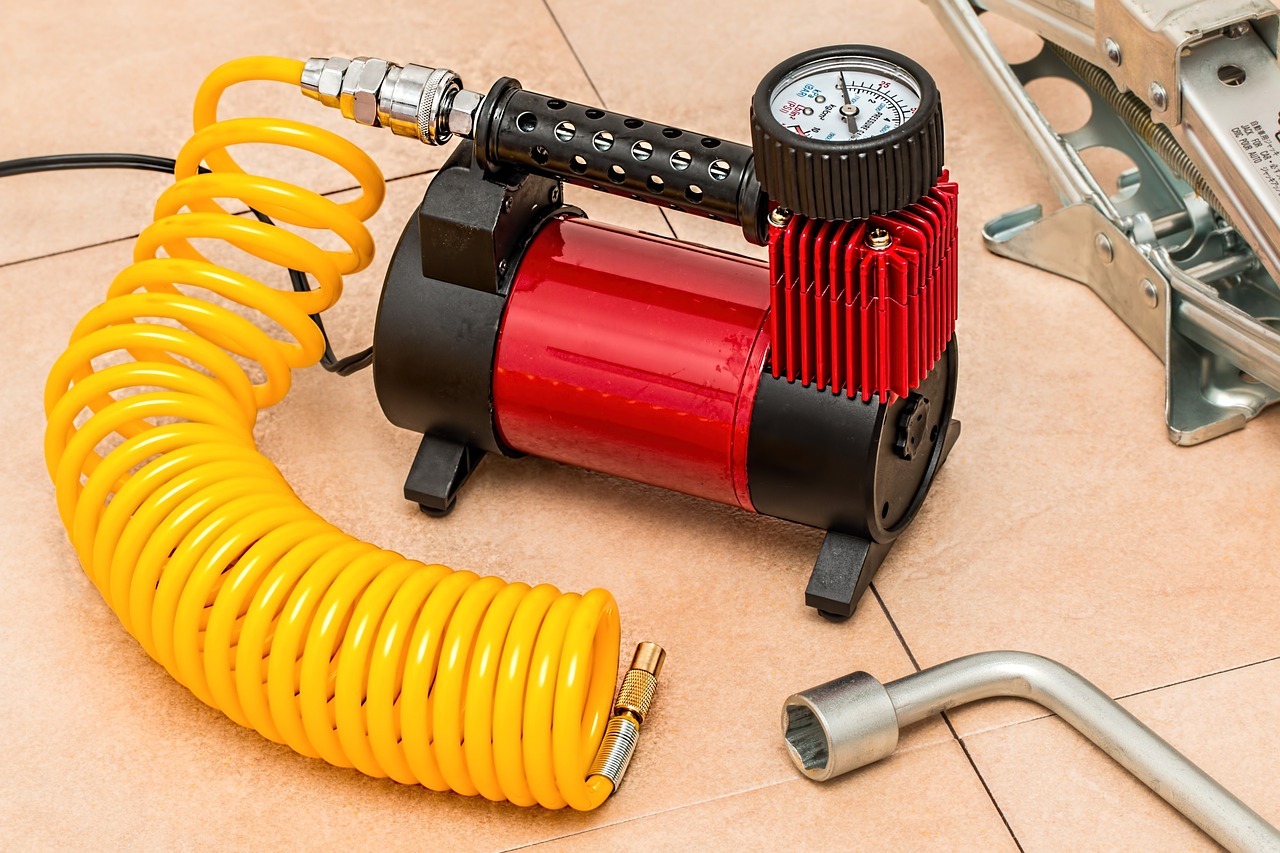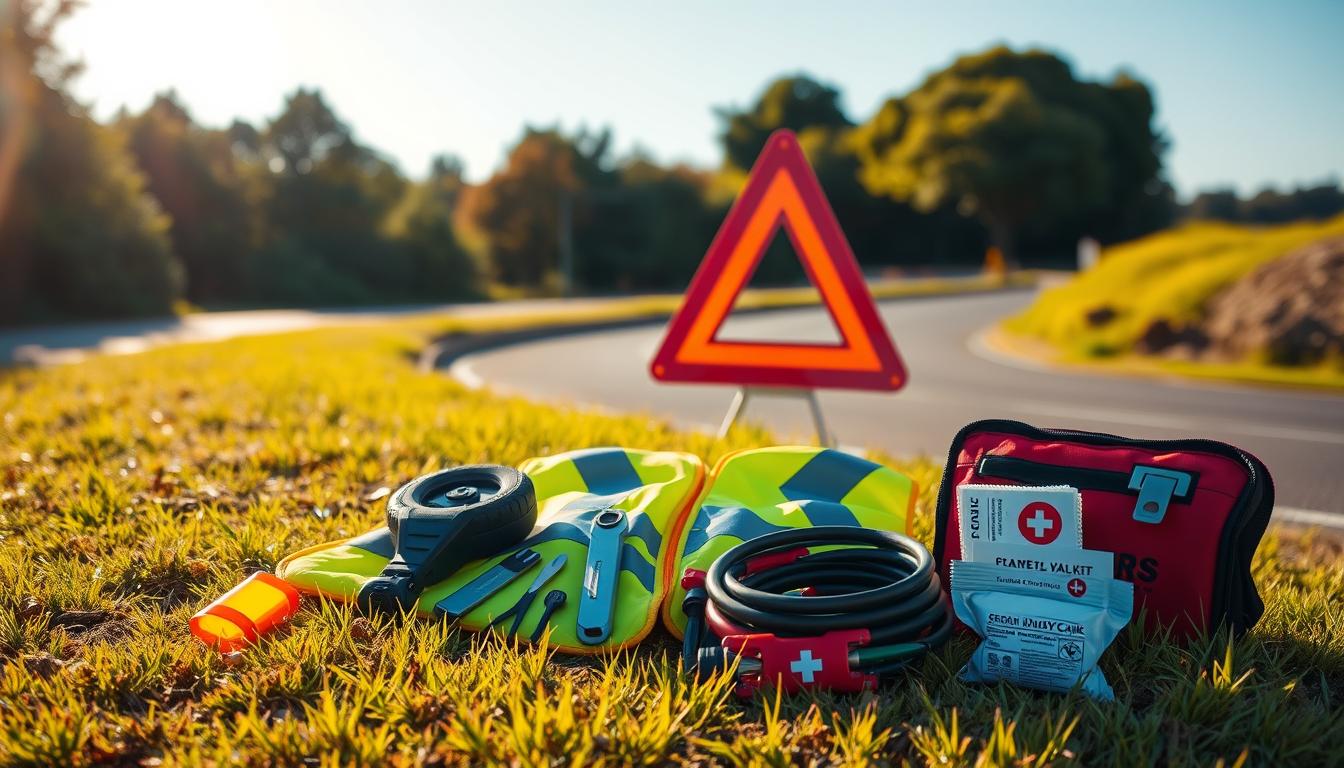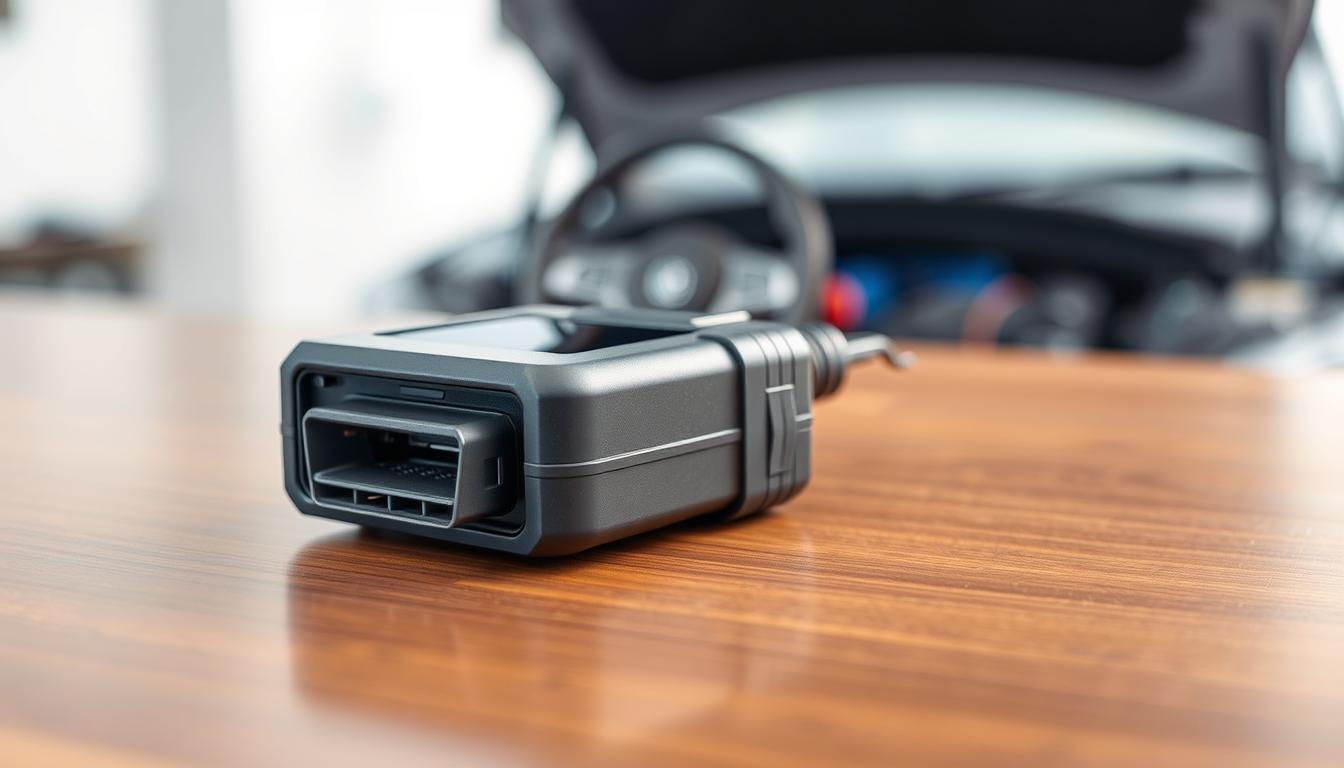
Proper tire pressure is crucial for maintaining the performance and safety of your GV60. In this comprehensive guide, we will provide you with everything you need to know about the recommended tire pressure for your vehicle. Maintaining the optimal tire pressure can ensure a smoother ride, better fuel efficiency, and increased safety. Join us as we explore the importance of tire pressure for your GV60 and provide you with tips for maintaining the correct tire pressure.
Why Is GV60 Recommended Tire Pressure Important ?
Proper tire pressure is crucial for your GV60’s overall performance and safety. The optimal tire pressure for your GV60 allows for better handling, traction, and braking. It also ensures a smoother ride, improved fuel efficiency, and extended tire life. Maintaining the correct tire pressure levels for your GV60 is key for ensuring that you enjoy all these benefits.
Driving with overinflated or underinflated tires can lead to dangerous situations. Overinflated tires can lead to a harsher ride, uneven tire wear, and may increase the risk of a blowout while driving. On the other hand, underinflated tires can result in poor handling, reduced fuel efficiency, and increased tire wear.
How Does Tire Pressure Affect Performance?
The proper tire pressure affects your GV60’s performance in several ways. Maintaining optimal tire pressure improves handling and stability when driving at high speeds or turning corners. It is because your vehicle’s weight is evenly distributed, allowing for better control. Proper tire pressure also ensures better braking and traction on the road, minimizing the risk of accidents.
Incorrect tire pressure can affect your GV60’s fuel economy, causing it to consume more fuel than necessary. Overinflated tires can cause your GV60 to lose traction, making it harder to drive on wet or slippery roads. Underinflated tires can cause your GV60 to work harder to move, resulting in lower fuel efficiency.
Make sure to always follow the recommended tire pressure for your GV60 to ensure optimal performance, safety, and fuel efficiency.
GV60 Tire Pressure Specifications
As mentioned before, maintaining the proper tire pressure is essential for optimum GV60 performance and safety. Fortunately, the manufacturer’s specifications for the recommended tire pressure range are readily available.
| GV60 Model | Tire Size | Recommended Pressure Range (PSI) |
|---|---|---|
| 2022 Genesis GV60 | 215/60R17 | 33 – 35 |
| 2022 Genesis GV60 | 225/55R18 | 35 – 37 |
It’s essential to stick to these tire pressure specifications, even if the tires and wheels are changed. The recommended range may change based on tire size and load capacity. Consult the owner’s manual or a professional mechanic if you’re unsure about the recommended tire pressure for your specific vehicle configuration.
How to Check and Adjust Tire Pressure
Maintaining the tire pressure of your GV60 is crucial for optimal performance and safety. Checking the tire pressure is a simple process that every driver should know how to do. Follow these steps to ensure that your GV60’s tire pressure is in the recommended range:
- Park your GV60 in a flat and level surface, ensuring that the vehicle is at rest.
- Locate the tire pressure specifications on the driver’s side door or in the owner’s manual. Make a note of the recommended tire pressure range.
- Remove the valve cap and use a tire pressure gauge to check the current tire pressure. Insert the gauge into the valve stem until there is no escaping air.
- The gauge will provide a reading that you can compare to the recommended range. If the tire pressure is too low or high, inflate or deflate the tire accordingly.
- Replace the valve cap and repeat the process for all four tires.
- After adjusting the tire pressure, recheck each tire to ensure that they are within the recommended range.
Remember to check the tire pressure at least once a month and before long trips to ensure a safe and comfortable ride. Proper tire pressure maintenance can improve fuel efficiency and extend the life of your tires, saving you money in the long run.
Benefits of Proper Tire Pressure for Your GV60
Maintaining the proper tire pressure in your GV60 comes with several benefits that can improve your driving experience.
Improved Fuel Efficiency
When your tires are inflated to the manufacturer’s recommended pressure, your GV60 can travel further on each tank of gas. Underinflated tires cause more resistance to motion and require more power to move your vehicle forward, leading to higher fuel consumption.
Better Handling
Properly inflated tires provide better handling and cornering, ensuring a smoother ride with less risk of losing control of your vehicle. This is especially important during inclement weather or emergency situations.
Increased Tire Lifespan
Maintaining the correct gv60 recommended tire pressure can increase the lifespan of your tires, saving you money on unnecessary replacements. Over- or underinflated tires can cause uneven tire wear, reducing the lifespan of your tires and compromising their safety.
Cost Savings
Maintaining the proper tire pressure can save you money on fuel costs and tire replacements, making it a cost-effective way to keep your GV60 performing at its best.
By following these gv60 tire pressure tips, you can experience the benefits of properly inflated tires, including improved fuel efficiency, handling, increased tire lifespan, and cost savings. Don’t let incorrect tire pressure compromise your GV60’s performance and safety.
Factors Affecting Tire Pressure
Tire pressure is affected by various factors that can impact its stability, performance, and safety. It’s essential to understand these factors and their influence on the recommended tire pressure for your GV60.
Temperature Changes
Temperature changes significantly affect tire pressure, causing it to fluctuate and affect your vehicle’s handling, traction, and fuel efficiency. For example, cold temperatures cause tire pressure to decrease, while hot temperatures cause it to rise. As a GV60 owner, you should use a tire pressure chart to adjust the tire pressure based on the current weather conditions.
Load Capacity
The amount of weight carries affects your optimal tire pressure for gv60. The tire pressure must be adjusted according to the vehicle’s load capacity. If your vehicle is carrying more weight, the tire pressure should be increased accordingly. On the other hand, if the load is lighter, the tire pressure can be lowered within the recommended range.
Tire Wear
The condition of your GV60’s tires also affects tire pressure. As tires wear out, the tire pressure must be adjusted to compensate for the decrease in overall tire performance. It’s essential to regularly inspect your tires and adjust the tire pressure when necessary, following the recommended GV60 tire pressure specifications.
| Factors | Affects on Tire Pressure |
|---|---|
| Temperature Changes | Fluctuates Tire Pressure |
| Load Capacity | Increases or Decreases Tire Pressure |
| Tire Wear | Decreases Tire Pressure |
By understanding these factors and their influence on tire pressure, you can maintain the correct tire pressure for your GV60, by ensuring tire pressure recommendation for gv60 optimal performance and safety.
Consequences of Incorrect Tire Pressure
Maintaining the optimal gv60 tire pressure guide is critical for the vehicle’s performance and safety. Incorrect tire pressure – whether overinflated or underinflated – can lead to several detrimental consequences.
Overinflated Tires
Overinflated tires reduce the contact patch of the tire, causing the vehicle to bounce and feel unstable, making it harder to control. It also leads to more wear in the center of the tread, shortening tire life.
Underinflated Tires
Underinflated tires lead to a lack of support for the vehicle, meaning the sidewalls of the tires have to bear the weight of the car, creating excessive heat buildup, and making the tires more prone to failing. It also reduces fuel economy and increases the chance of hydroplaning or skidding in wet conditions.
It’s important to follow the recommended tire pressure guide for the GV60 to avoid these consequences and ensure optimal performance and safety. Neglecting proper tire pressure maintenance can lead to significant expenses and risks that can be quickly avoided with preventative measures.
Tire Pressure Maintenance Tips for the GV60
Maintaining the correct tire pressure for your GV60 is crucial for improved performance and safety on the road. In this section, we will offer some tire pressure maintenance tips that will help you get the most out of your vehicle and tires.
1. Check the tire pressure regularly
It is important to check your correct tire pressure for gv60 at least once every month to make sure it is still within the recommended range. This can help you detect any pressure changes early on, reducing the chances of accidents and prolonging the life of your tires.
2. Adjust the tire pressure when necessary
If you notice that the tire pressure is too low or high, adjust it immediately. Underinflated tires can affect your GV60’s handling and increase fuel consumption, while overinflated tires can cause premature wear and tear on your tires and reduce traction.
3. Check the tire pressure when the weather changes
The weather can affect your tire pressure. Cold temperatures can cause your tires to deflate, and hot temperatures can cause them to overinflate. Check your tire pressure regularly during seasonal changes and adjust as necessary.
4. Rotate your tires regularly
Rotating your tires can help to ensure even wear, prolong their lifespan, and improve your vehicle’s performance. Consult your owner’s manual to determine the recommended rotation frequency for your GV60.
5. Use the right tire pressure gauge
Using the right tire pressure gauge is crucial for accurate pressure readings. Invest in a good quality tire pressure gauge and keep it well-maintained. A digital tire pressure gauge is preferable as it has a higher degree of accuracy.
6. Replace worn tires as soon as possible
Worn tires can affect your GV60’s handling, traction, and safety. Check your tires regularly for signs of wear and replace them as necessary to maintain optimal performance and safety.
Tire Pressure and Seasonal Changes
Temperature fluctuations during different seasons can affect the tire pressure of your GV60, which can ultimately affect its performance and safety. During winter, the cold temperatures cause the tire pressure to drop, resulting in underinflated tires. In contrast, summer temperatures can cause the tire pressure to rise, leading to overinflated tires. Therefore, it’s important to keep a close eye on your tire pressure during seasonal changes.
The gv60 tire pressure chart has specific tire pressure recommendations to maintain optimal performance and safety, and these recommendations may vary according to the season.
| Season | GV60 recommended tire pressure range |
|---|---|
| Winter | 2.5 bar (36 PSI) |
| Summer | 2.3 bar (33 PSI) |
Note that these recommendations may vary depending on the load capacity of your GV60, the driving conditions, and the type of tires you use. It’s crucial to check the tire pressure regularly to ensure it remains within the recommended range.
Consult your GV60 owner’s manual for more detailed information on seasonal tire pressure recommendations.
Recommended Tire Pressure for Winter Driving
Winter driving can be challenging, and adjusting your tire pressure is crucial to ensure optimal performance and safety. For the GV60, the recommended tire pressure for winter driving is 32 PSI for the front tires and 31 PSI for the rear tires. These recommended pressures are slightly lower than the standard tire pressure to accommodate for the colder temperatures, ensuring the tires perform at their best in icy and snowy conditions.
Winter tires are also recommended for driving in colder climates, as they offer better traction and handling compared to all-season tires. It’s essential to check the tire pressure regularly, especially during winter, as temperature fluctuations can affect the tire pressure.
By maintaining the optimal tire pressure and using winter tires, you can ensure a safer and more reliable driving experience for your GV60 during the winter months.
Signs of Incorrect Tire Pressure
Keeping your GV60 tire pressure maintenance at the recommended pressure is essential for maintaining optimal performance and safety. However, it’s not always evident that your tires are underinflated or overinflated. To ensure your vehicle is running on correctly pressurized tires, keep an eye out for these common signs:
- Uneven tire wear: If you notice that your tires are wearing unevenly or more on one side than the other, it could be an indicator of incorrect pressure.
- Poor fuel efficiency: If you’ve noticed that your fuel efficiency has decreased, make sure to check your tire pressure. Underinflated tires can cause your engine to work harder, resulting in more fuel consumption.
- Difficulty in handling: Overinflated tires can make it challenging to control your vehicle, while underinflated tires can affect your car’s handling and stability. If you’re having trouble steering or maneuvering your GV60, check your tire pressure immediately.
- Low tire pressure warning light: Most modern vehicles, including the GV60, are equipped with a tire pressure monitoring system, which will illuminate a warning light on the dashboard when the tires are underinflated. If you see this light, check your tire pressure as soon as possible.
Regularly checking your GV60’s tire pressure is crucial to ensure you catch any issues before they cause serious problems. If you notice any of these signs of incorrect tire pressure, make sure to adjust your tire pressure according to the manufacturer’s specifications.
Conclusion
In conclusion, maintaining the optimal tire pressure for your GV60 is crucial for ensuring a smoother ride, better fuel efficiency, and extended tire life. Adhering to the manufacturer’s recommended specifications and regularly checking the tire pressure can significantly improve your vehicle’s performance and safety.
Remember to follow the step-by-step process of checking and adjusting the tire pressure, and pay attention to signs of overinflated or underinflated tires. Additionally, consider adjusting the tire pressure during seasonal changes, particularly for winter driving.
By implementing the tips and best practices provided in this guide, you can experience the benefits of having the correct tire pressure for your GV60. So, keep your tires properly inflated and enjoy the optimal performance and safety of your vehicle.
FAQ
What is the recommended tire pressure for the GV60?
The recommended tire pressure for the GV60 can vary depending on the specific model and tire size. It is important to refer to the manufacturer’s specifications, which can usually be found in the owner’s manual or on a sticker located on the inside of the driver’s side door jamb. This information will provide you with the optimal tire pressure range for your GV60.
Why is tire pressure important for your GV60?
Tire pressure is crucial for your GV60’s performance and safety. Properly inflated tires provide better handling, braking, and traction, resulting in improved safety on the road. Maintaining the optimal tire pressure also helps to extend the life of your tires and improve fuel efficiency, saving you money in the long run.
What are the tire pressure specifications for the GV60?
The tire pressure specifications for the GV60 can be found in the owner’s manual or on a sticker located on the inside of the driver’s side door jamb. The manufacturer’s specifications will provide you with the recommended tire pressure range, typically measured in pounds per square inch (psi), for your specific GV60 model.
How do I check and adjust the tire pressure of my GV60?
To check and adjust the tire pressure of your GV60, you will need a tire pressure gauge and an air compressor or a gas station with an air pump. Simply remove the valve cap from each tire, firmly press the tire pressure gauge onto the valve stem, and take note of the reading. Add or release air as necessary to reach the recommended tire pressure. It is important to check the tire pressure when the tires are cold for accurate readings.
What are the benefits of proper tire pressure for the GV60?
Proper tire pressure offers several benefits for your GV60. It improves fuel efficiency, as underinflated tires can cause increased rolling resistance and higher fuel consumption. Correct tire pressure also provides better handling and stability, improves braking performance, and enhances overall driving comfort. Additionally, maintaining the proper tire pressure helps to extend the lifespan of your tires.
What factors can affect tire pressure for the GV60?
Tire pressure can be influenced by various factors, such as changes in temperature, tire wear, and load capacity. Temperature changes can cause the tire pressure to fluctuate, especially during seasonal transitions. Tire wear can also affect the tire pressure, as worn tires may have different inflation requirements. Additionally, the load capacity of your GV60, including passenger and cargo weight, can impact the optimal tire pressure.
What are the consequences of incorrect tire pressure for the GV60?
Incorrect tire pressure can have detrimental effects on your GV60’s performance and safety. Overinflated tires can result in a harsh and uncomfortable ride, reduced traction, and increased risk of tire damage or blowouts. On the other hand, underinflated tires can cause poor handling, decreased fuel efficiency, increased tire wear, and potential overheating. It is essential to maintain the proper tire pressure to ensure optimal performance and safety for your GV60.
Do you have any maintenance tips for tire pressure on the GV60?
Yes, here are some maintenance tips for tire pressure on the GV60:
– Regularly check the tire pressure at least once a month and before long trips.
– Use a reliable tire pressure gauge to ensure accurate readings.
– Adjust the tire pressure according to the manufacturer’s recommended specifications.
– Keep the tires properly inflated to the recommended tire pressure range.
– Inspect the tires for any signs of damage or unusual wear and address any issues promptly.
– Be mindful of temperature changes and adjust the tire pressure accordingly.
– Avoid keeping the GV60 parked for extended periods with tires underinflated or overinflated.
– Consult a professional if you are unsure about checking or adjusting the tire pressure.
How does tire pressure change with seasonal variations?
Seasonal changes, particularly temperature fluctuations, can affect tire pressure. As temperatures drop, the tire pressure tends to decrease, and as temperatures rise, the tire pressure tends to increase. It is important to regularly monitor and adjust the tire pressure to compensate for these variations. Refer to the manufacturer’s recommendations for guidance on adjusting the tire pressure during different seasons.
What is the recommended tire pressure for winter driving in the GV60?
Winter driving requires special attention to tire pressure. In colder conditions, it is recommended to slightly increase the tire pressure compared to normal driving conditions. This helps to compensate for the decrease in pressure due to colder temperatures and ensure proper traction and handling on snow and ice. Consult the owner’s manual or the manufacturer’s specifications for the recommended tire pressure range for winter driving in your GV60.
What are the signs of incorrect tire pressure in the GV60?
Signs of incorrect tire pressure in the GV60 can include uneven tire wear, reduced handling and stability, decreased fuel efficiency, frequent tire punctures, increased road noise, and abnormal vibrations. Additionally, if you notice the TPMS (Tire Pressure Monitoring System) light on the dashboard illuminating or flashing, it could be an indication of low tire pressure. If you experience any of these signs, it’s important to check and adjust the tire pressure as necessary.





